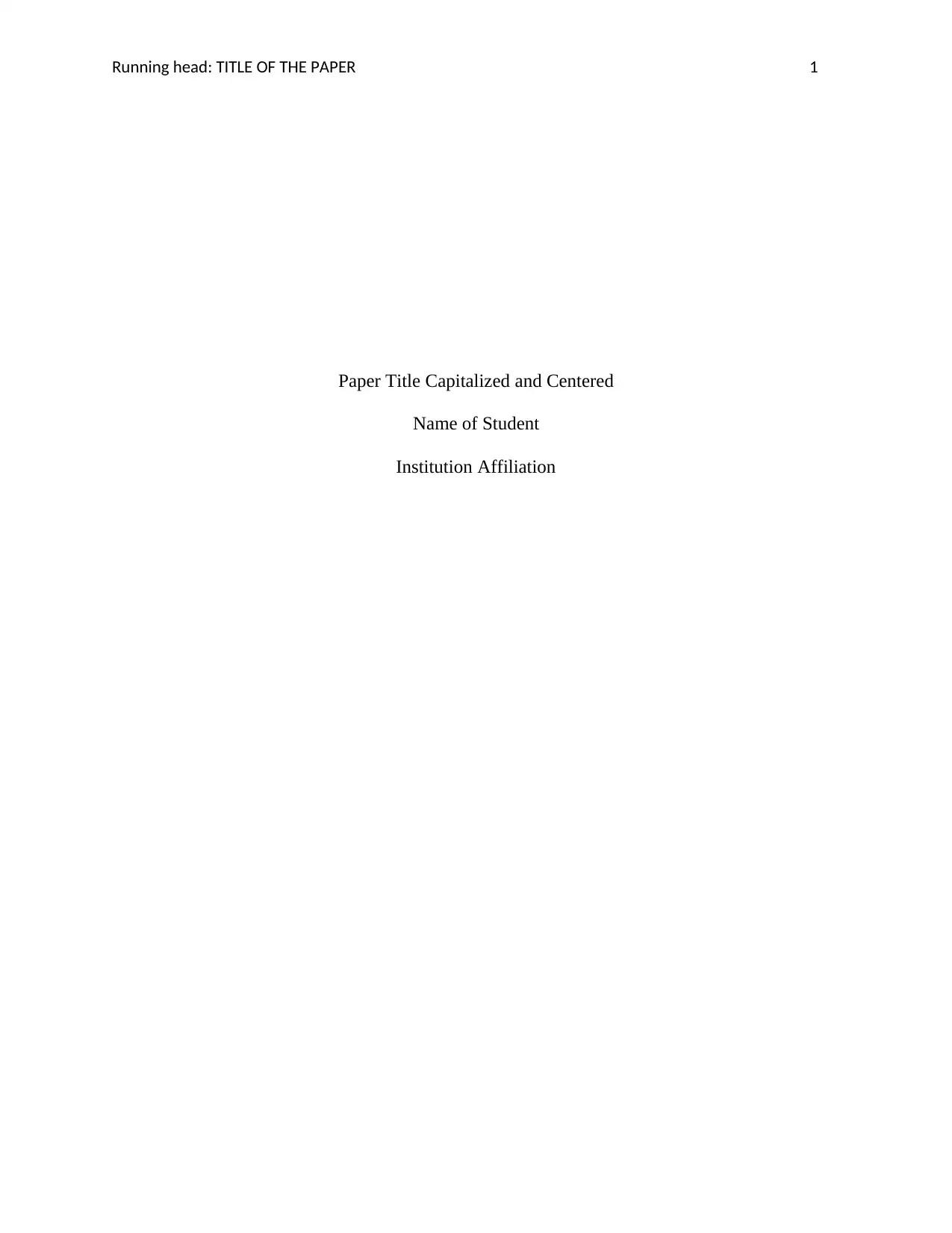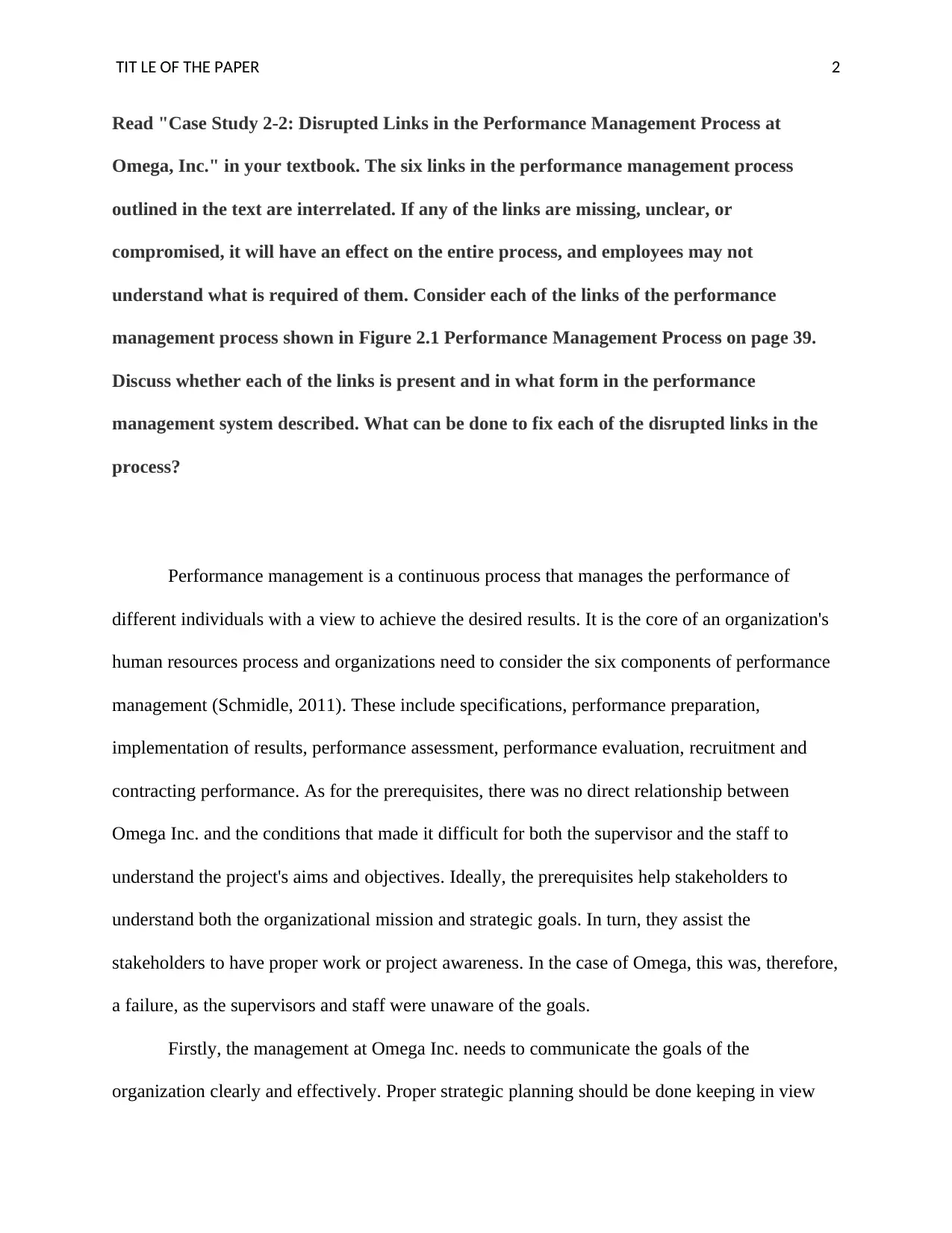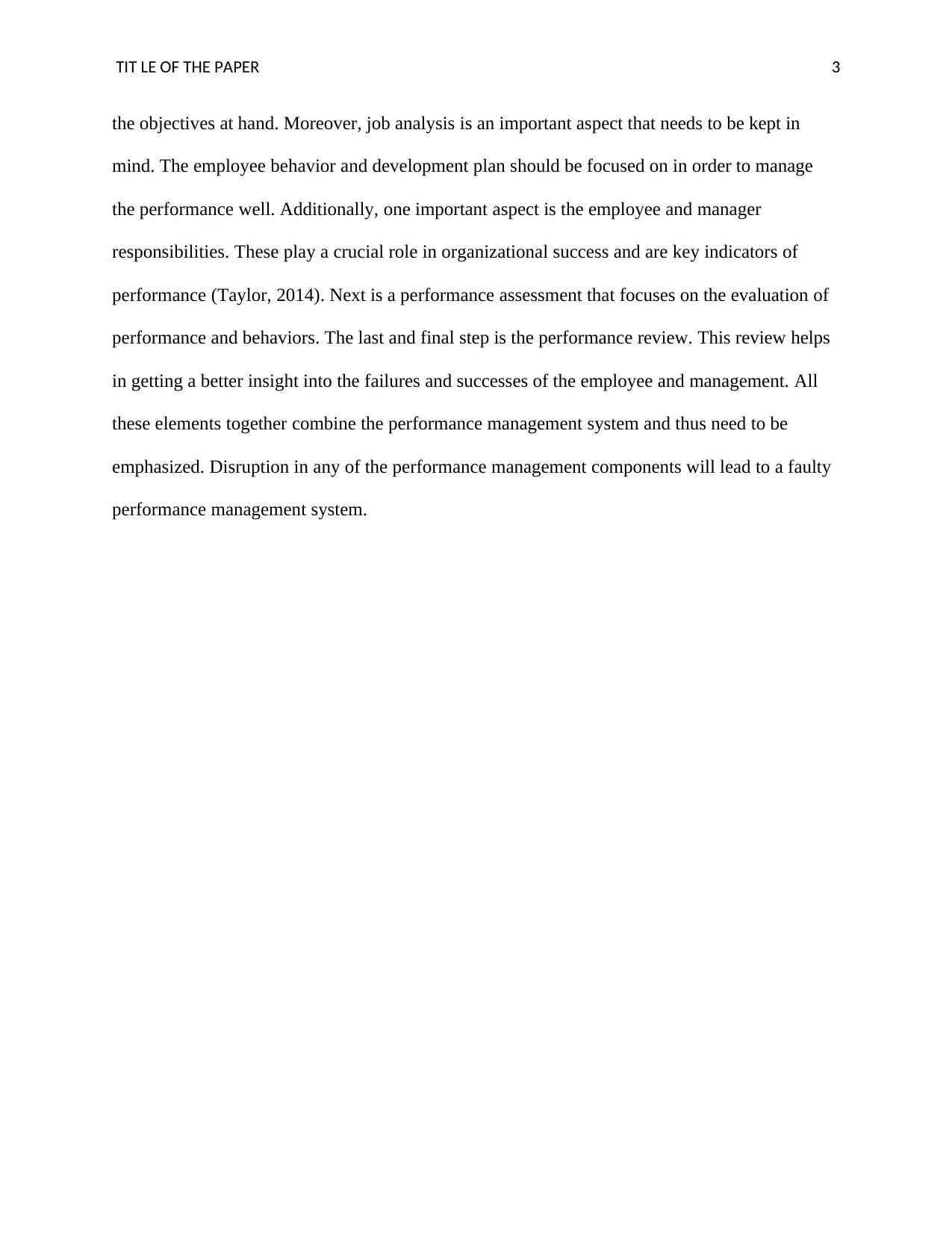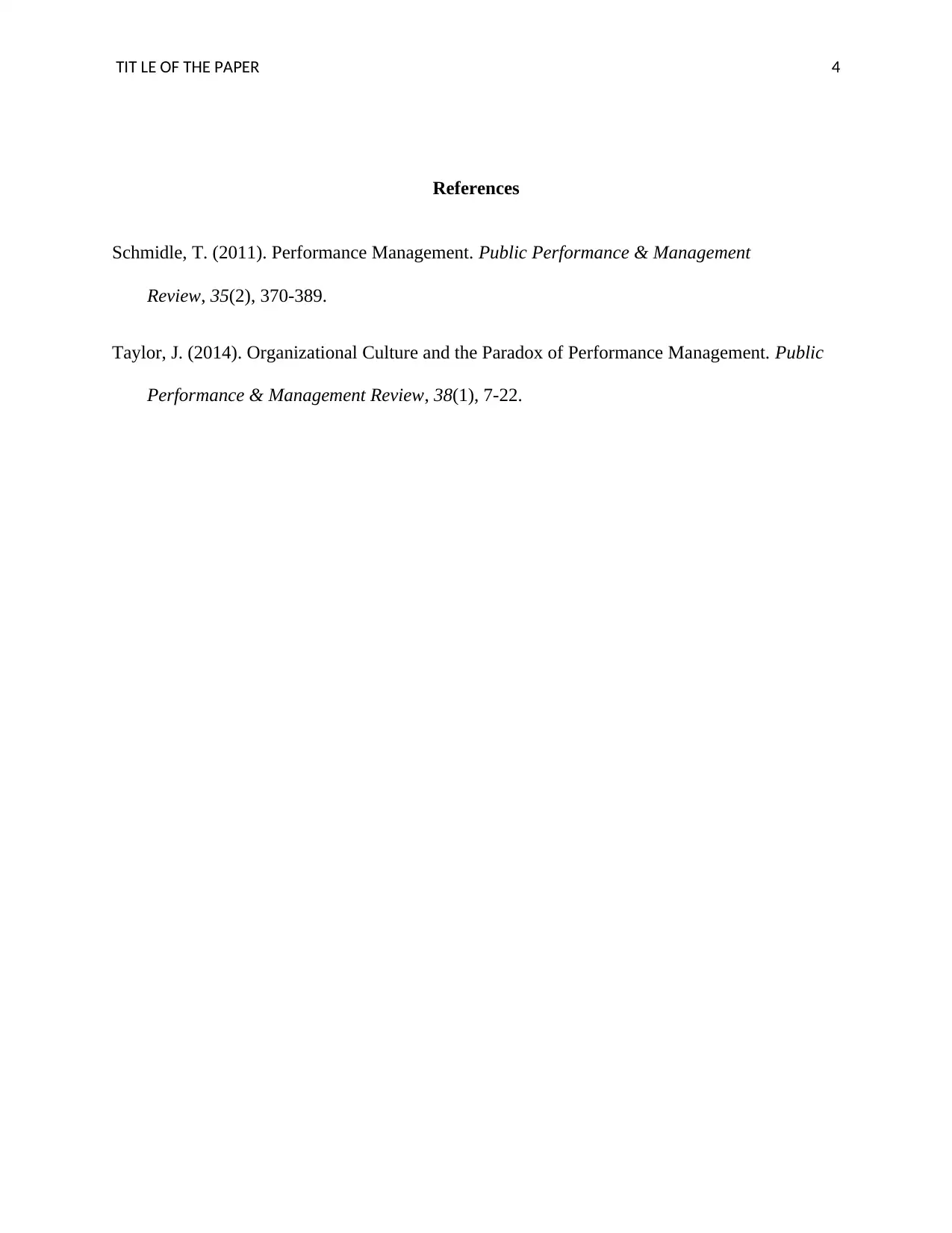Analysis of Disrupted Performance Management at Omega Inc. Case Study
VerifiedAdded on 2022/08/19
|4
|544
|12
Case Study
AI Summary
This case study examines the performance management process at Omega Inc., focusing on the six interrelated links and their impact on employee understanding and performance. The assignment analyzes whether each link—specifications, performance preparation, implementation of results, performance assessment, performance evaluation, and recruitment/contracting performance—is present and effective within the company's system. The analysis highlights disruptions caused by unclear goals and lack of communication, emphasizing the need for clear communication of organizational objectives, strategic planning, job analysis, and employee responsibilities. It underscores the importance of each element in the performance management system. The assignment suggests improvements to rectify the issues, emphasizing the importance of a well-defined and effectively implemented performance management system for overall organizational success. The references provided support the concepts discussed.
1 out of 4











![[object Object]](/_next/static/media/star-bottom.7253800d.svg)